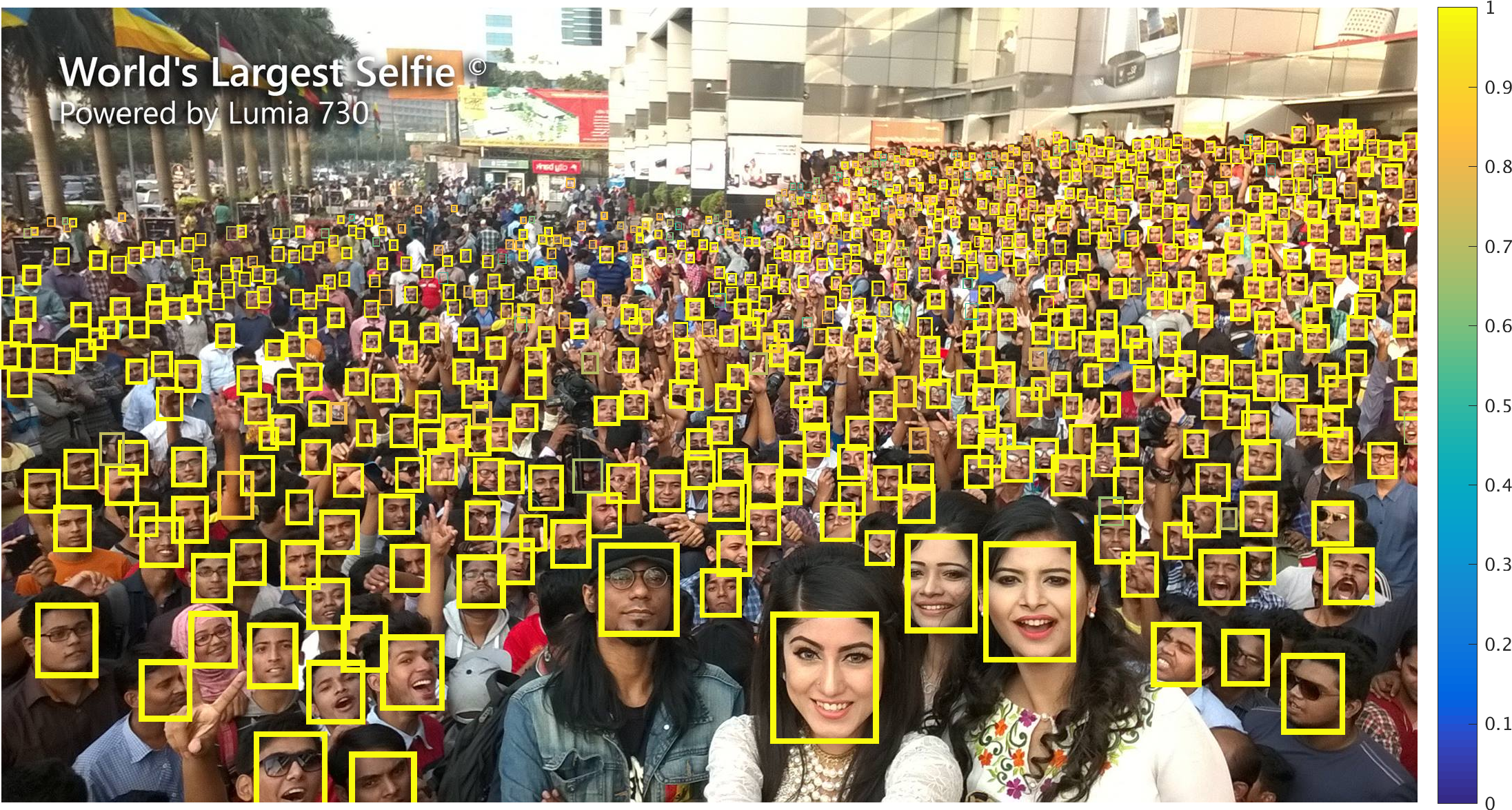Finding Tiny Faces
Though tremendous strides have been made in object recognition, one of the remaining open challenges is detecting small objects. We explore three aspects of the problem in the context of finding small faces: the role of scale invariance, image resolution, and contextual reasoning. While most recognition approaches aim to be scale-invariant, the cues for recognizing a 3px tall face are fundamentally different than those for recognizing a 300px tall face. We take a different approach and train separate detectors for different scales. To maintain efficiency, detectors are trained in a multi-task fashion: they make use of features extracted from multiple layers of single (deep) feature hierarchy. While training detectors for large objects is straightforward, the crucial challenge remains training detectors for small objects. We show that context is crucial, and define templates that make use of massively-large receptive fields (where 99% of the template extends beyond the object of interest). Finally, we explore the role of scale in pre-trained deep networks, providing ways to extrapolate networks tuned for limited scales to rather extreme ranges. We demonstrate state-of-the-art results on massively-benchmarked face datasets (FDDB and WIDER FACE). In particular, when compared to prior art on WIDER FACE, our results reduce error by a factor of 2 (our models produce an AP of 82% while prior art ranges from 29-64%).
PDF Abstract CVPR 2017 PDF CVPR 2017 Abstract






 WIDER FACE
WIDER FACE
